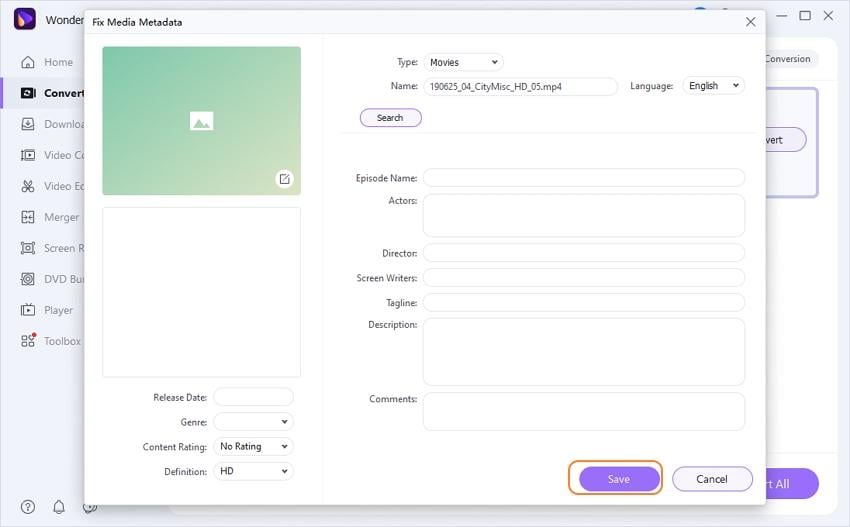

- Video metadata editor mac how to#
- Video metadata editor mac movie#
- Video metadata editor mac plus#
- Video metadata editor mac download#

Video metadata editor mac how to#
It could be very similar to how the color tags work on MacOS it would save each metadata entry that is separated by commas as a text label, such as names of cast members, with the added benefit of adding or removing individual entries from the list as required.īut following your idea - I worked out how to save a metadata preset in Subler, and did the same idea with an mp4-metadata file. What I mean is a metadata editor that contains a simplistic text-based repository of all my previously entered metadata entries (of my personalised cast members, producers, genres, etc) that could be re-selected via auto completion as I type in the metadata for my other videos.
Video metadata editor mac movie#
I don’t mean a locally-stored version of the online movie databases, if that’s what you mean. I enjoy making my own home production movies that involve amateur cast members and crew, which requires me to manually enter the same text each time, so it would be nice to access retrievable entries from a locally-stored database instead.īut my pick so far would have to be Subler. I've looked at a number of metadata editors for the Mac and am surprised none of them work with a locally-stored database in order to save personalised cast members, studios, producers, etc - rather than the common procedure of retrieving movie tag information from an online source. convert or mix down the original video, but have been given some assurance from the developer that it can be used solely as as a metadata editor, and will leave the original video characteristics intact. However I was initially concerned that using Subler would change the video format and/or quality at the same time, i.e.
Video metadata editor mac plus#
Use the slider to move the start/end point and cut the route.I've just started using Subler and really like the simple minimalistic-looking interface, plus the fact that I can add just the specific metadata as required, with no unnecessary metadata junk. When you have many tabs, navigate through them by scrolling horizontally. Swap the tabs to define the order in which the traces should appear and double-click on them to change their names. The Total tab displays information about all open traces merged into one. Switch between routing and as the crow flies (straight lines between track points) when editing tracesĪt the bottom, you can see a panel with information about the traces you import.

Show or hide the overlays currently used. Manage the file structure, drag and drop files, tracks and track segments Merge with another trace (automatically extends time, heart rate, cadence, power and temperature data)Įxtract all track segments and creates one trace for eachĪdd a waypoint (drag to change its location and use the buttons to edit info, duplicate or remove)ĭelete track points and/or waypoints inside/outside rectangle selectionĬhange the display color and opacity, these values will be exported and detected when re-imported Reverse the trace and adapt the timestamps
Video metadata editor mac download#
You can also drag a tab to your desktop to download the file.Įnter edition mode to add, move, insert or delete (Shift+click) anchor points, right-click on anchor points for more options (split, change start, delete)Ĭhange the speed and starting time of the trace Optionally, merge all files in the chosen order. Time, heart rate, cadence, power and temperature data are automatically extended. Start drawing a new route by placing anchor points on the mapĭownload the files to your desktop or save to Google Drive™ to get a shareable link and embedding code. Import and visualize GPX files (or drag and drop anywhere in the window) Check out the User Guide for more info and small tutorials!


 0 kommentar(er)
0 kommentar(er)
